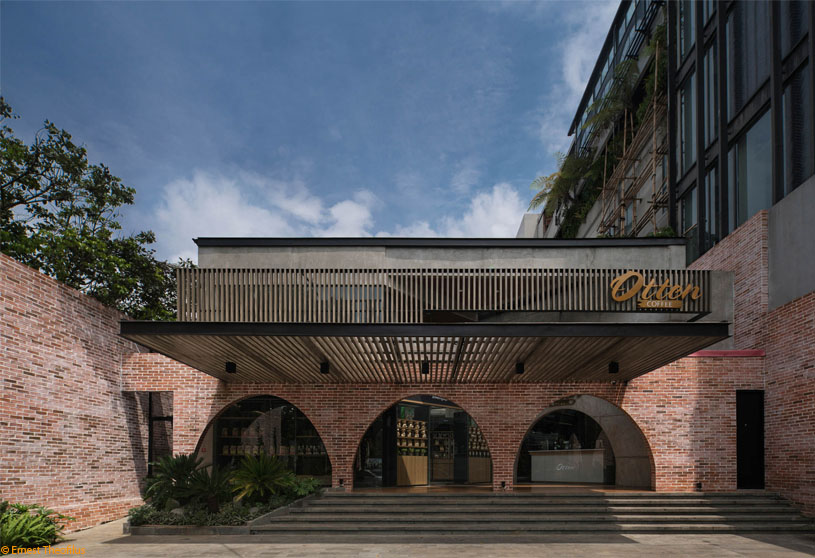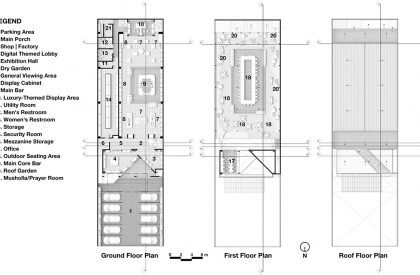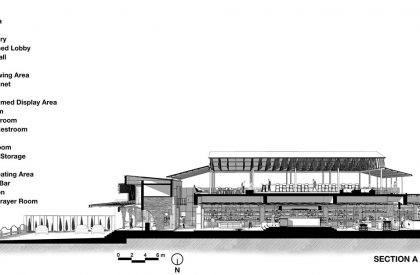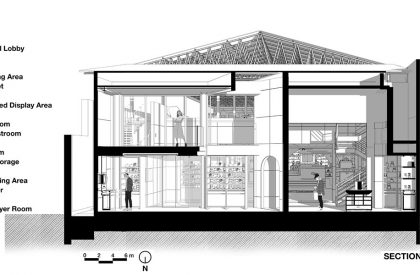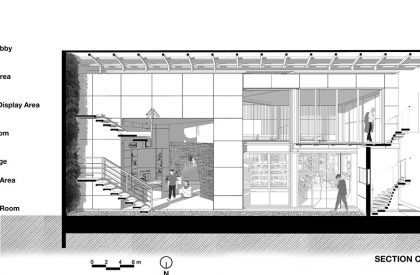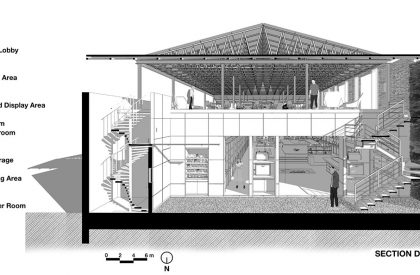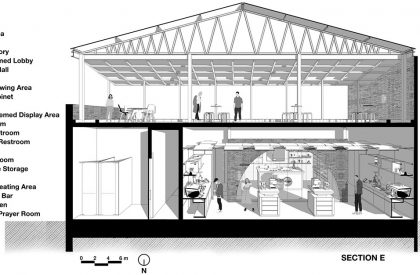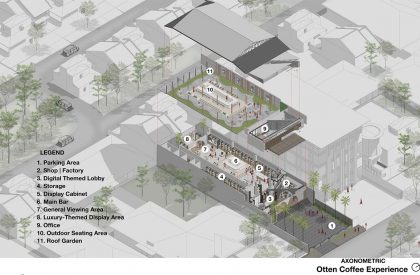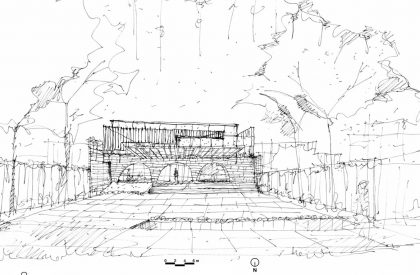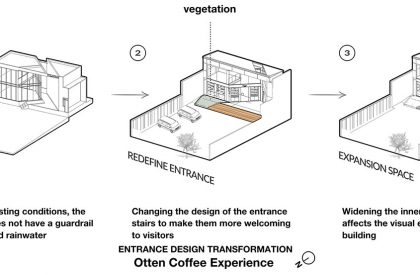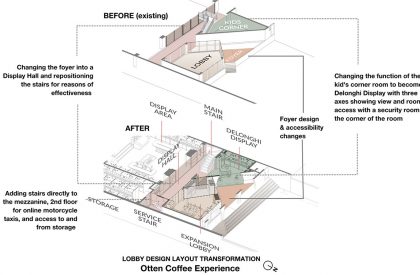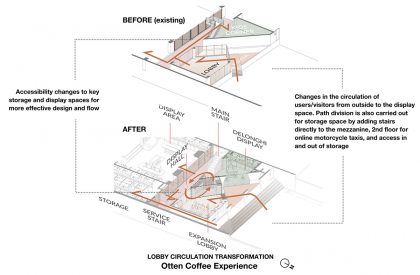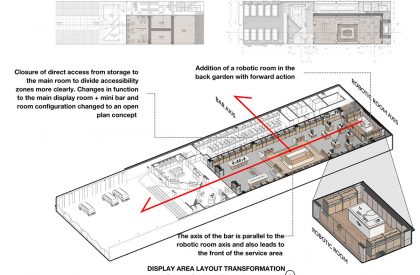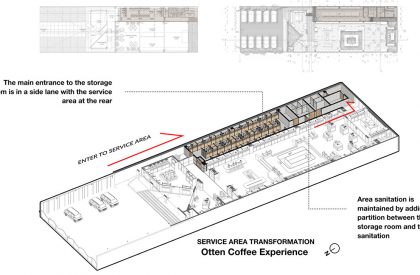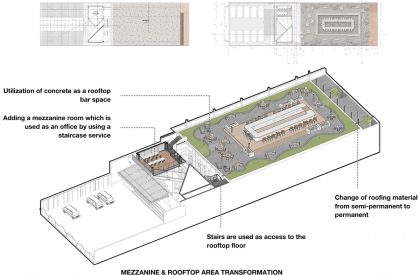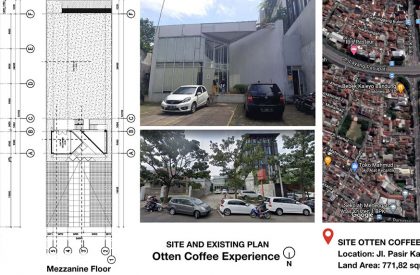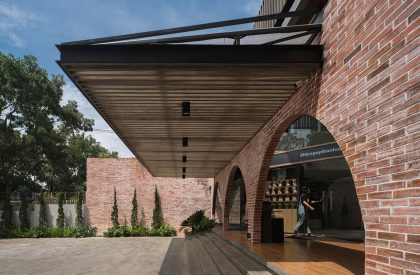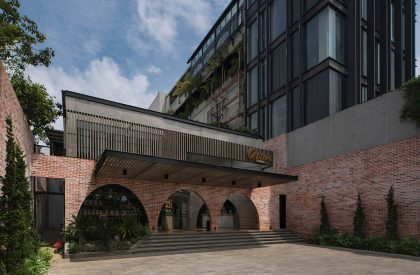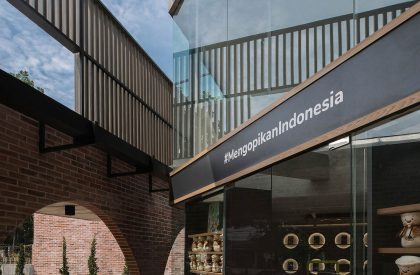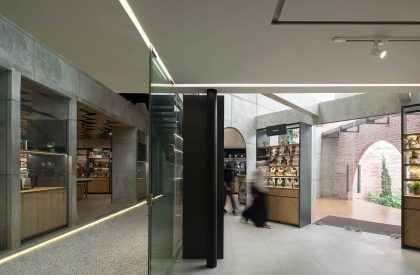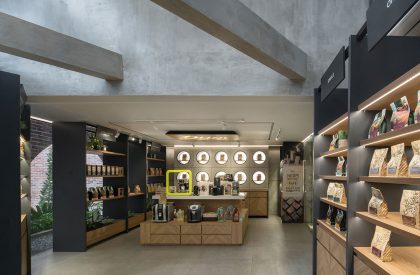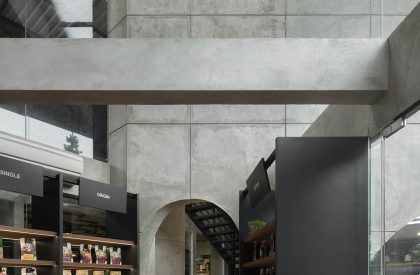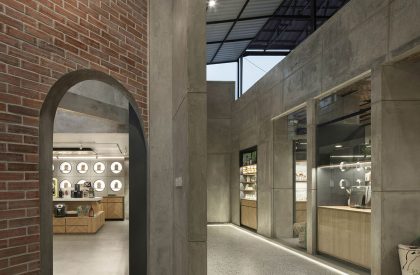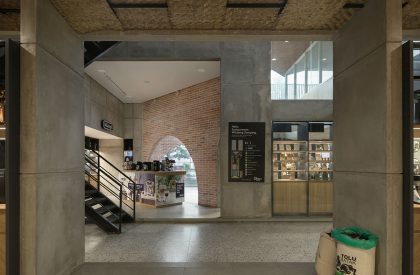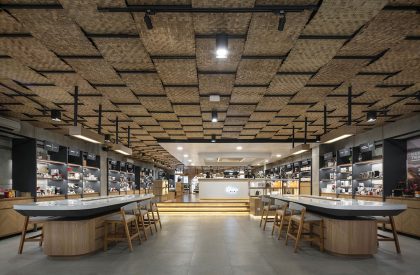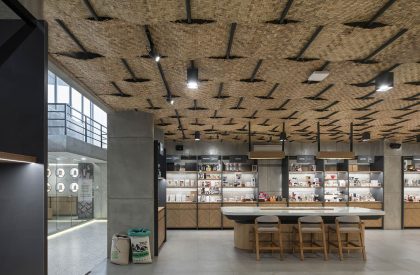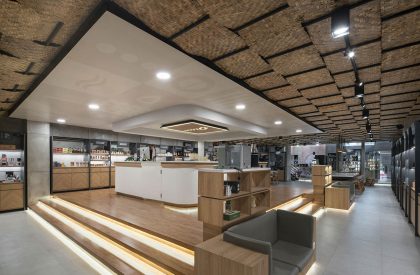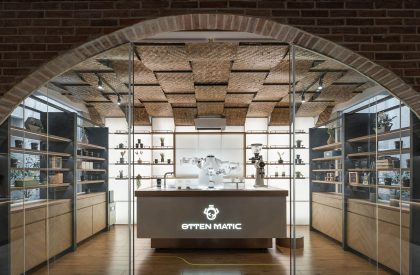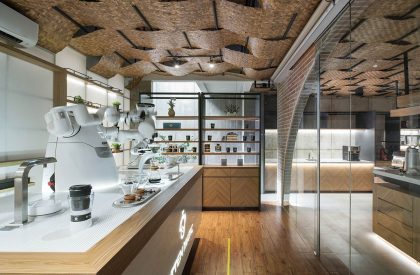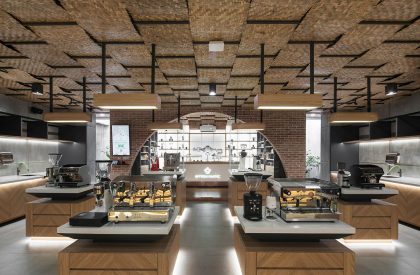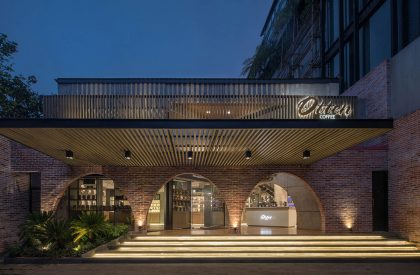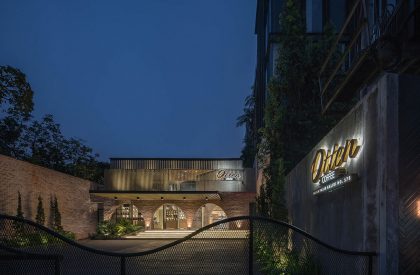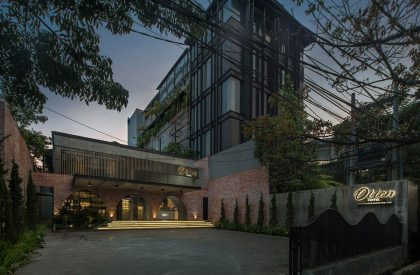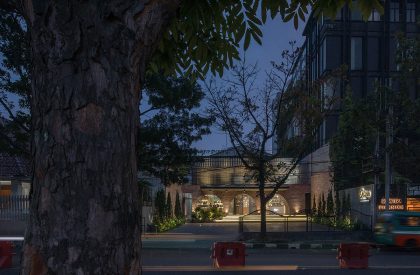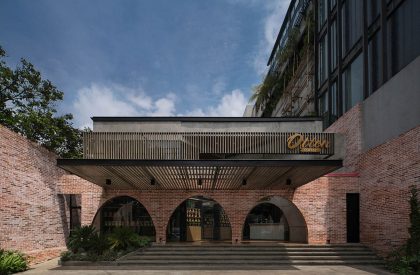Excerpt: Otten Coffee Experience by Realrich Architecture Workshop is an architectural refurbishment project conceptualizing local craftsmanship as a common thread by elaborating on six materials such as brick, bamboo, gypsum, stone, concrete, and steel. They produce fresh artistic forms with repetition of brick arches covered with exposed cement and natural lighting, plus artistic lighting and design layout.
Project Description
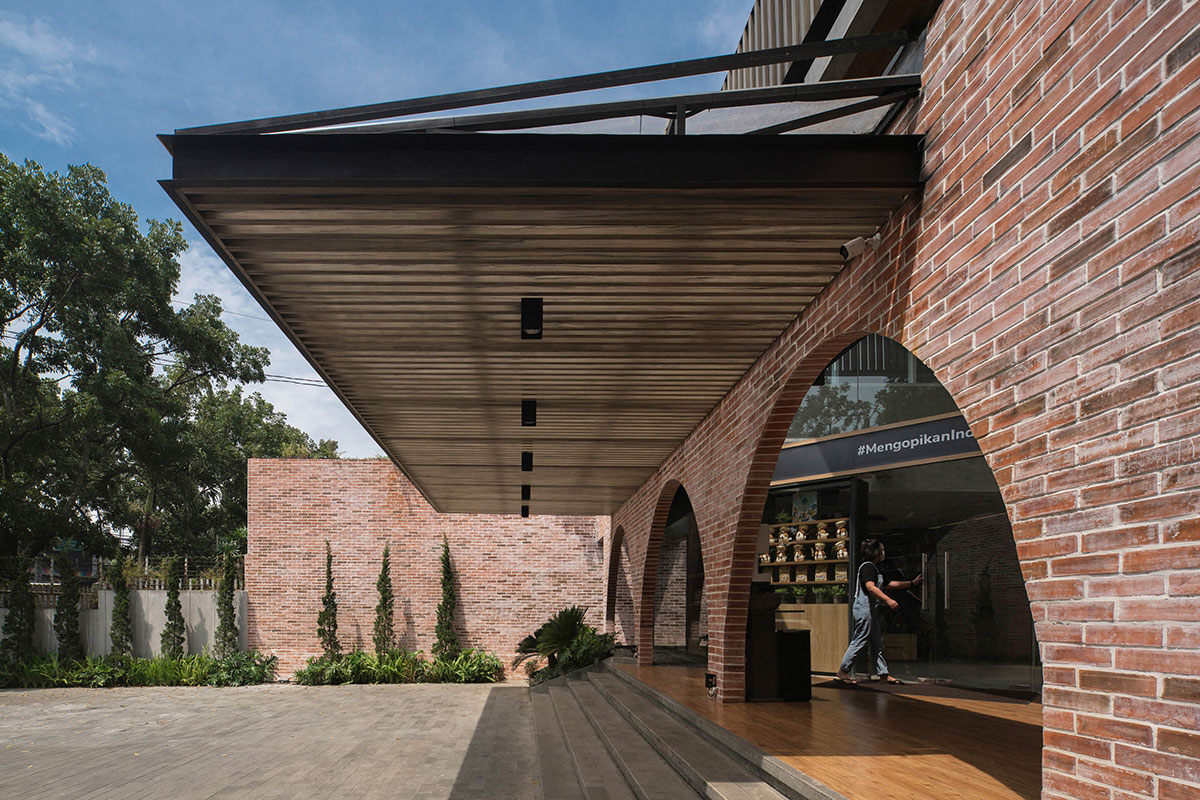
[Text as submitted by architect] Located in Kaliki, Bandung, Otten Coffee Experience is a renovation project of a two-story building with a total of 777 sq m of building area where the old structure is preserved. Spaces are redefined and optimized to give guests a better experience.
In designing this project, the designers applied the concept of a Bandung locality, which is similar to Gesamtkunstwerk, which means total work of art in German. They make local craftsmanship a common thread by elaborating on six materials to summarize the craftmanship experimentation at the Realrich Architecture Workshop, such as brick, bamboo, gypsum, stone, concrete, and steel. So as to produce fresh artistic forms with repetition of brick arches covered with exposed cement and natural lighting, plus artistic lighting and design layout.
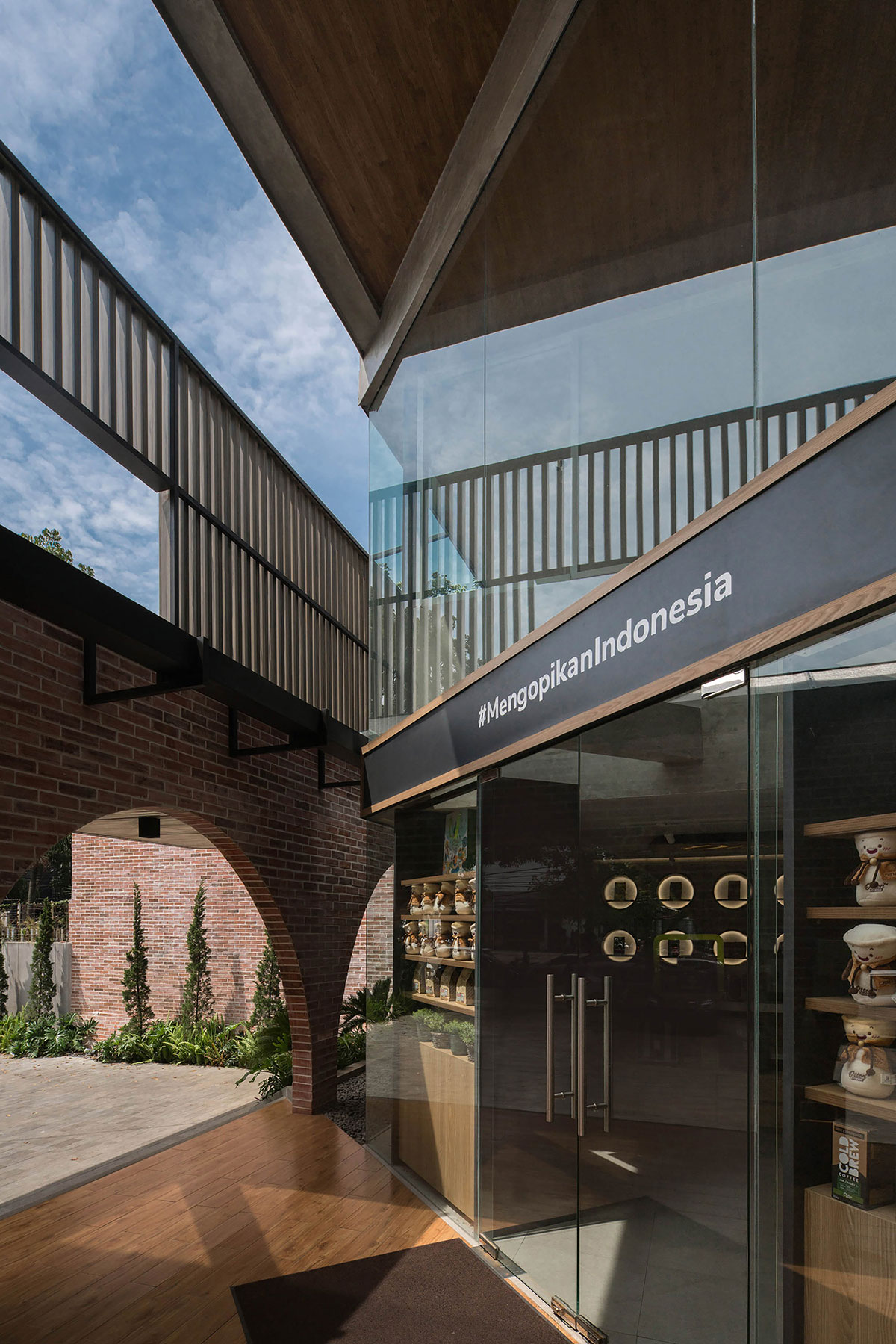
The exterior wall facade is layered with a combination of timber slats and brick walls. Timber slats buffer the sun, create shades, and texture on the plain concrete wall, and also keep the rain from splashing inside the building. Covered by a new cantilevered canopy, three arches framing the interior draw people’s attention inside the space, while a small slit at the side allows direct access to storage. The tilted wall of the lobby makes a spacious double-volume entry in an unexpected triangle shape and guides curiosity further to the main area.
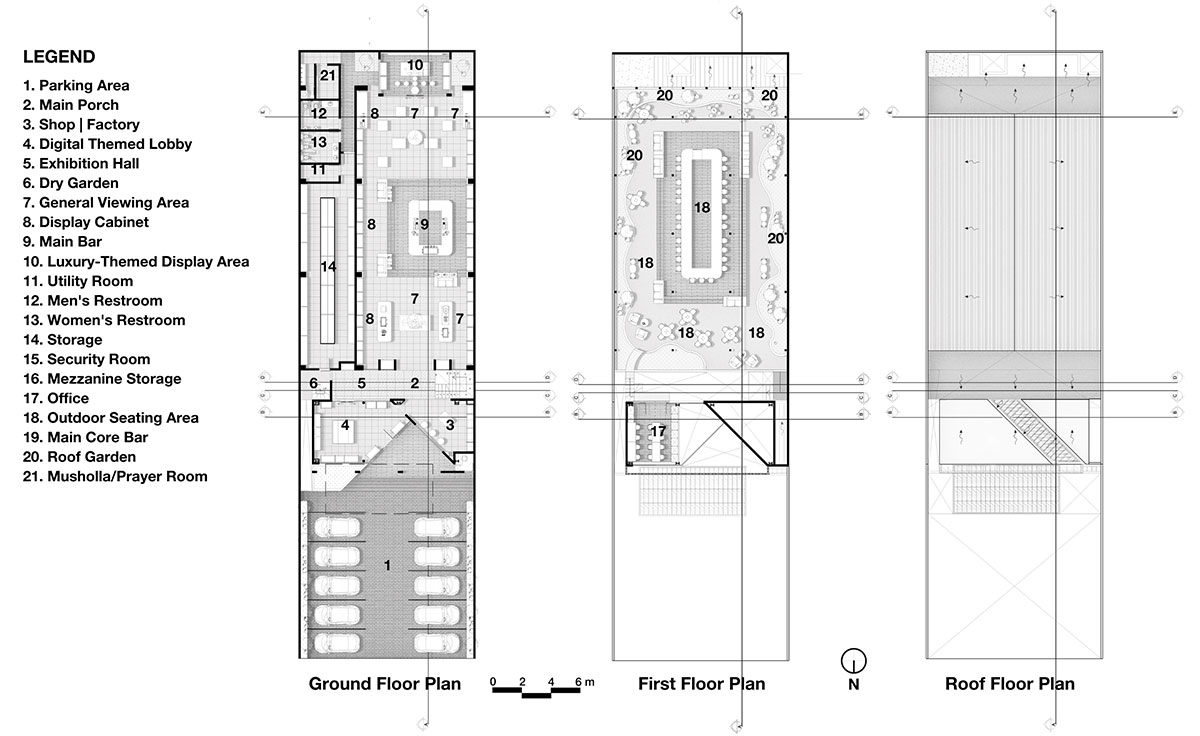
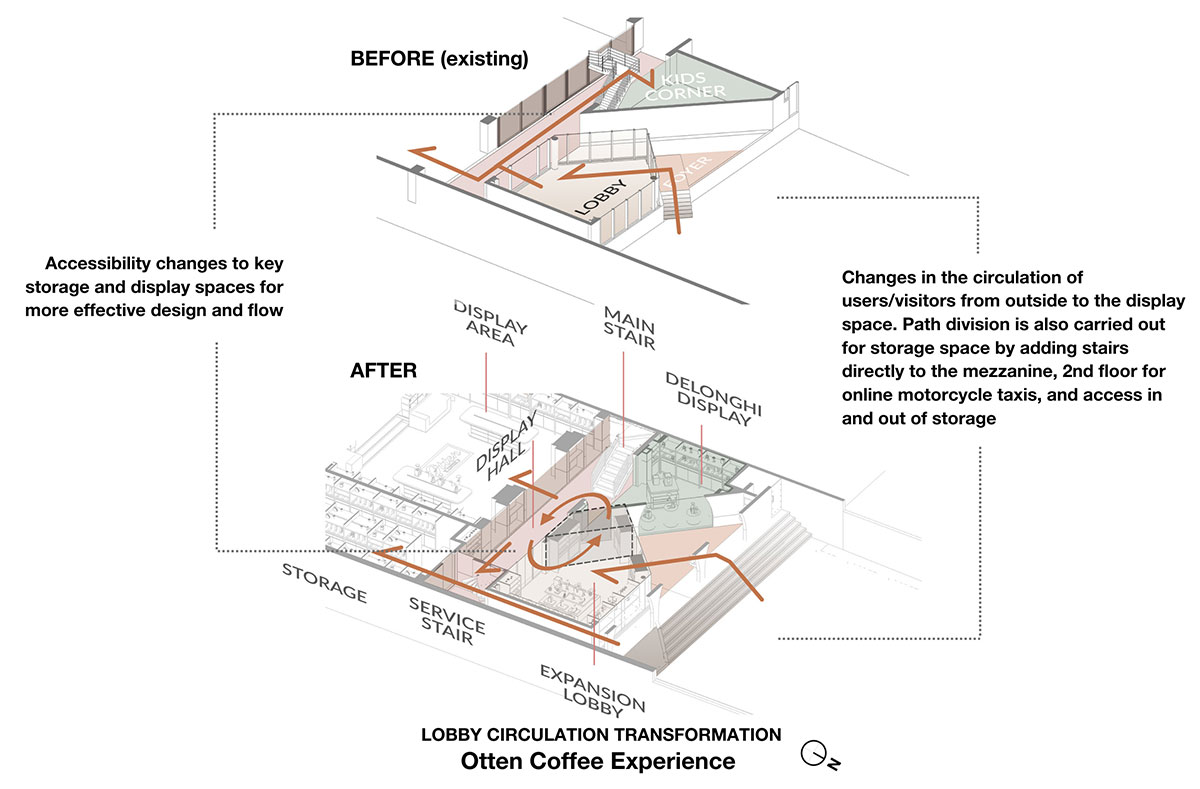
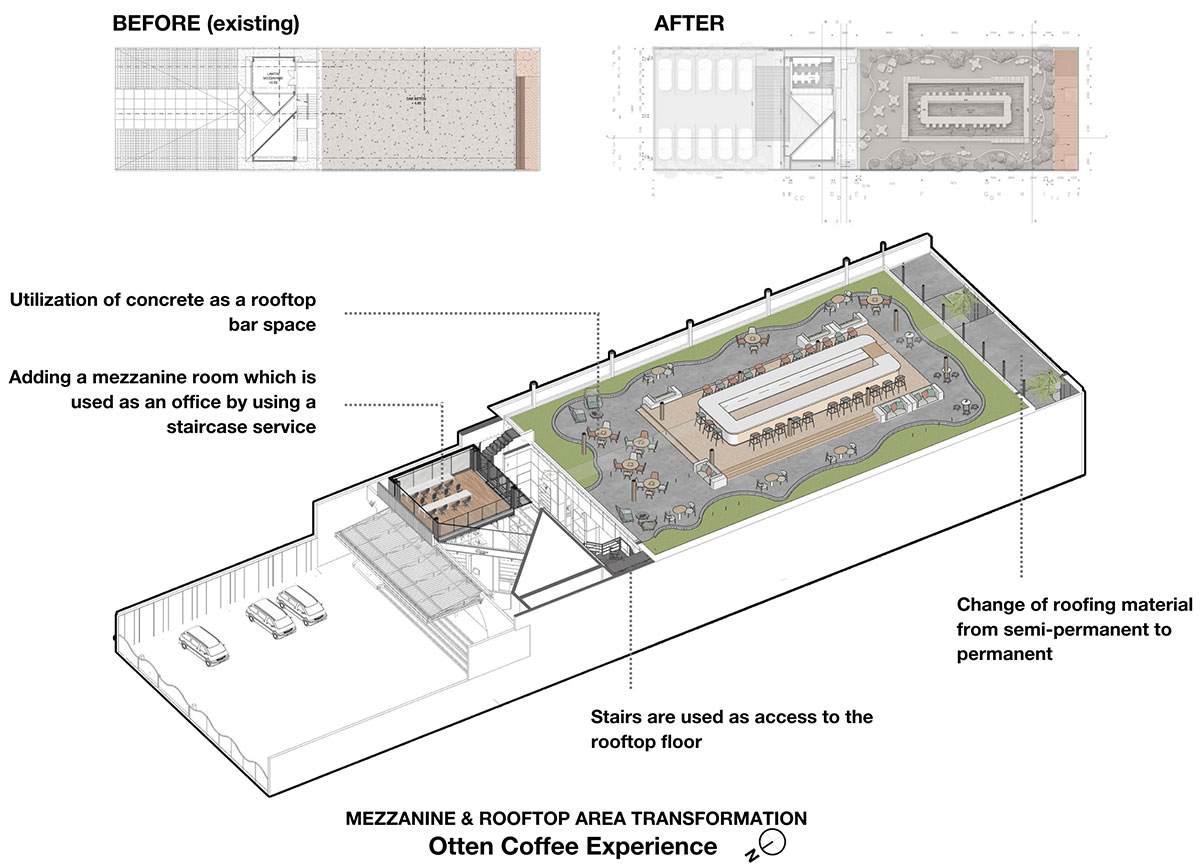
Entering the space, guests pass a 36-square-meter digital theme lobby with visibility and access to the tavern, which is located side-by-side. The 24-square-meter tavern takes up a smaller portion of the space. Natural light penetrates through the transparent roofing. Behind it is a 24-square-meter linear display hall, which previously functioned as a foyer. This area separates the entry space from the main area. On one side, a U-shaped existing stair is modified to an L-shaped one considering efficiency; it leads to an office and coffee shop in the mezzanine area above the lobby. On the other side, access to direct storage is subtly hidden.
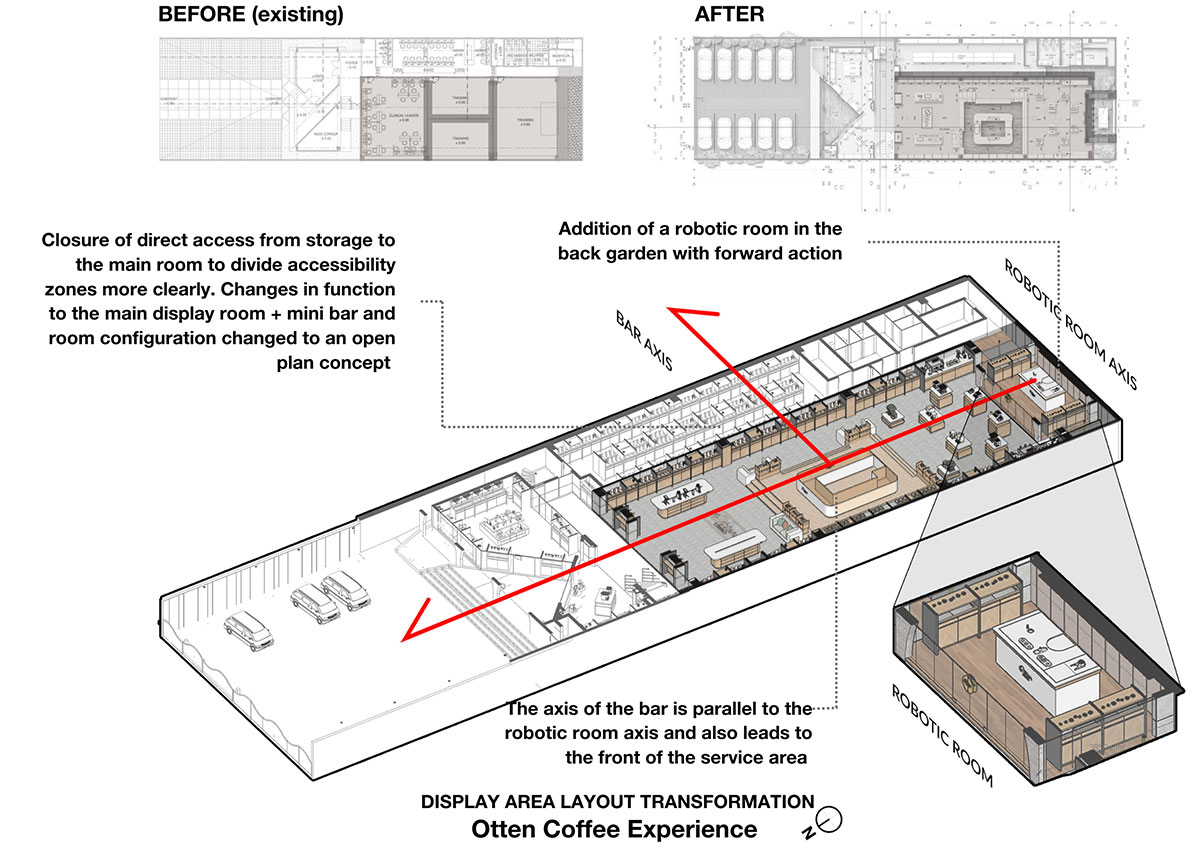
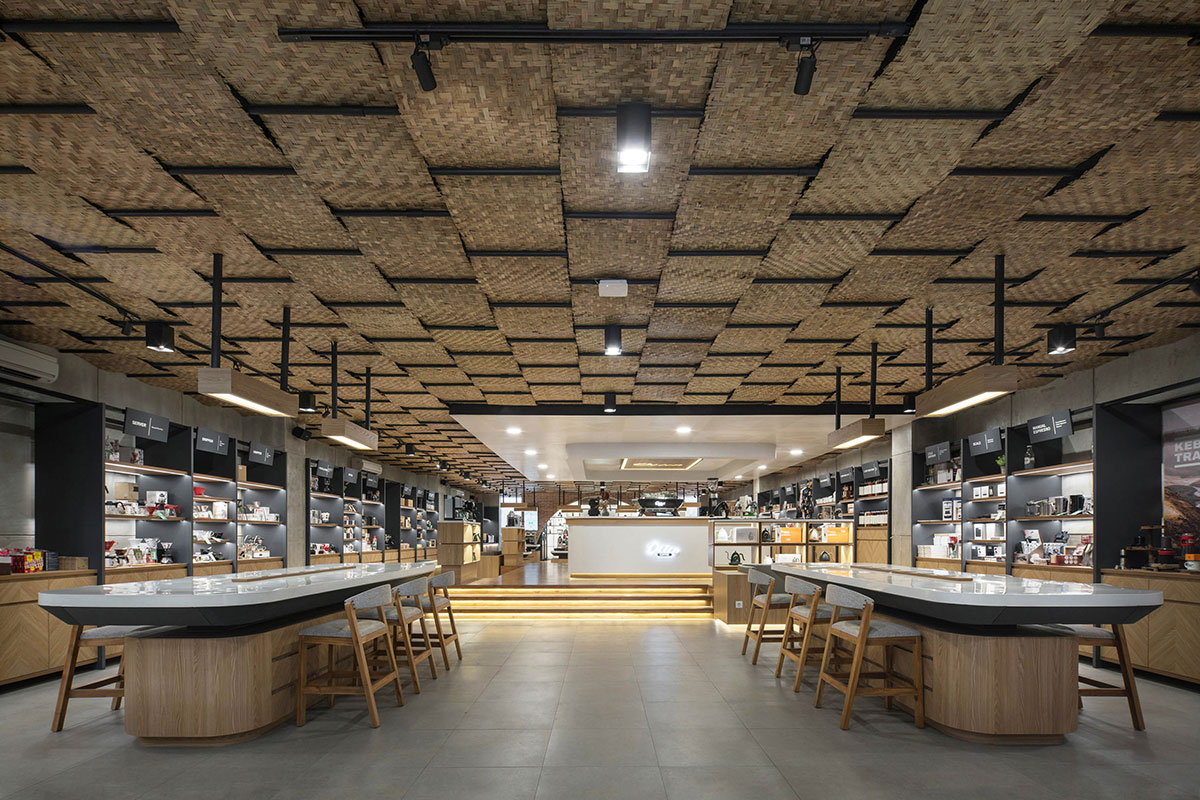
Moving to the main area, a traditional gedek bamboo or bamboo weave on the ceiling blends into the space, creating a strong and bold identity. The 144 sq m open-plan space exhibits products, which are displayed along the wall sides in sequence. Two customized tables are set up for tasting. Furniture is concealed using drywall, considering construction time and budget efficiency.
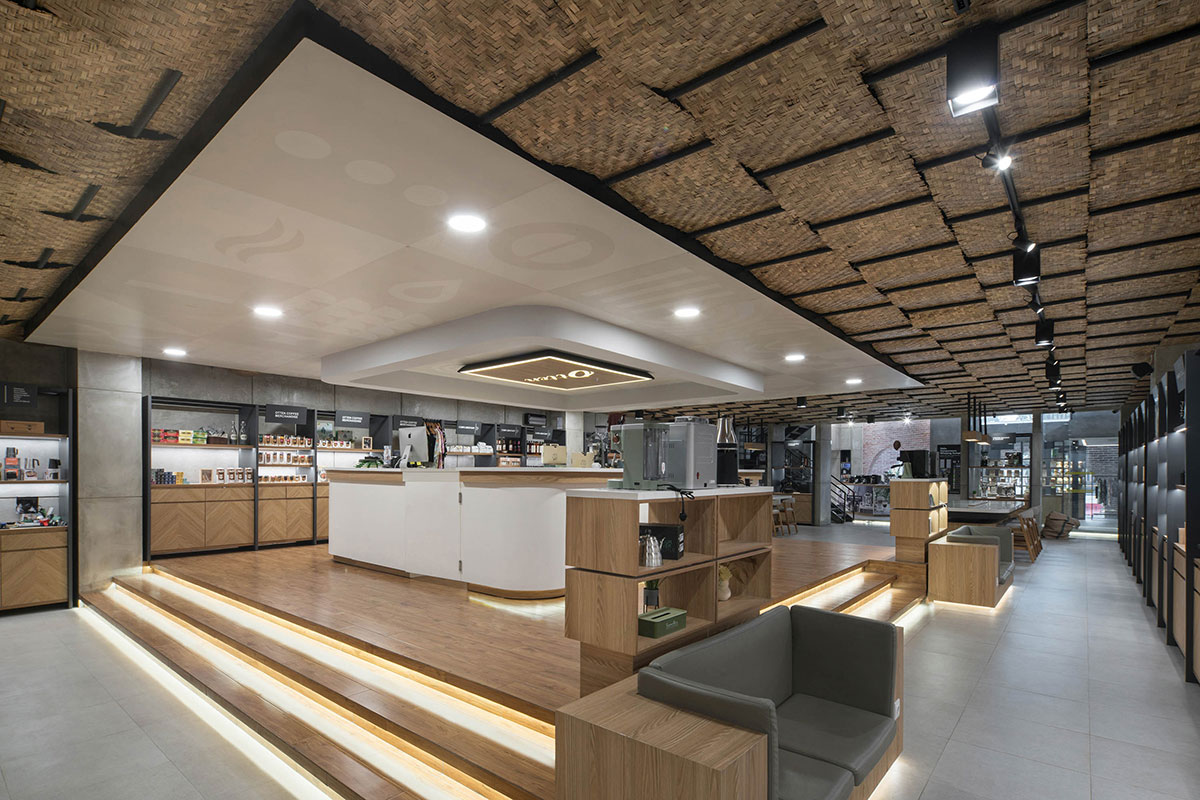
A 36-square-meter bar in the center is elevated with timber parquet flooring, creating hierarchy and dynamism inside the space. Playing with two tones, white and natural timber finish, the bar subtly stands out among the grey tone on the wall and floor. A timber finish in a herringbone pattern on display cabinets balances and keeps the material continuity within the space.
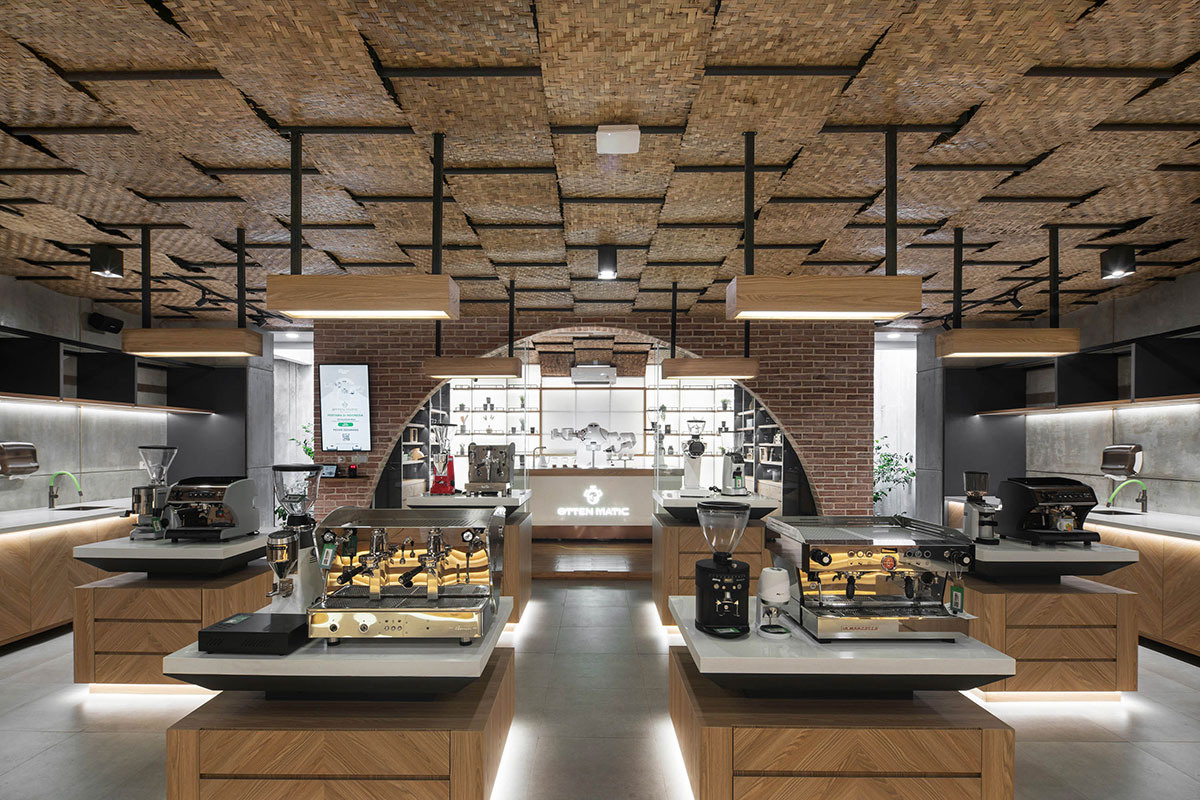
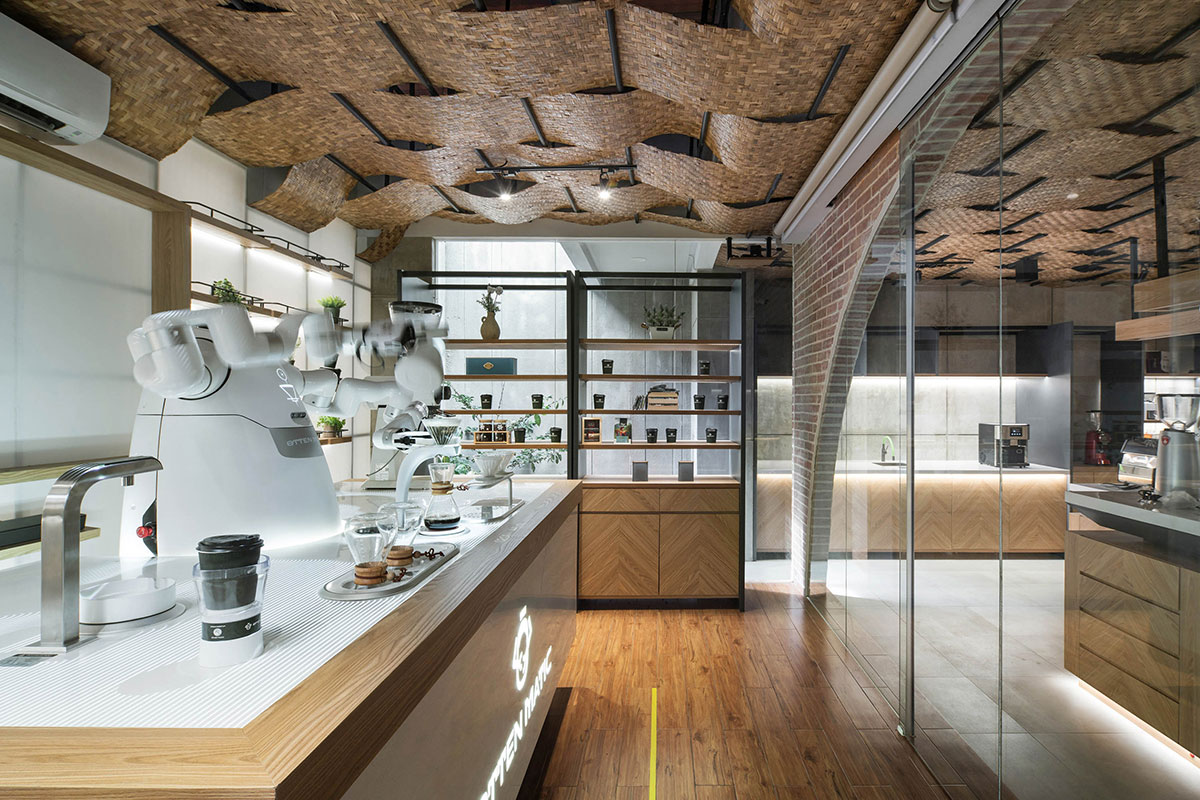
Behind the bar is a display of coffee machines, which are lined up on pedestals. Further at the end, a 15 sq m dedicated robotic room serves performative visuals, enclosed by the glass as its own space, framed with an arch brick wall, and elevated also with timber parquet flooring.
